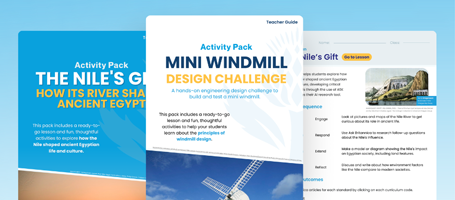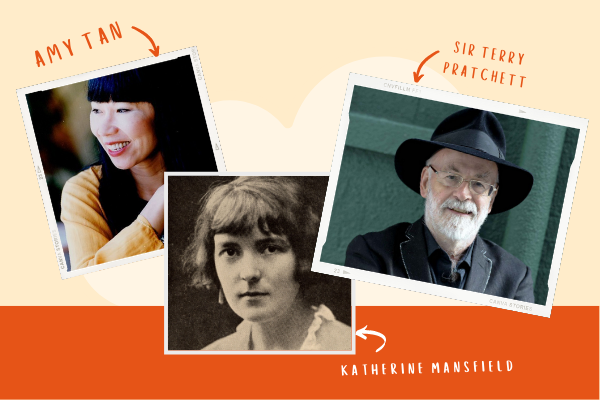How is your library celebrating World Book and Copyright Day this year?
Special exhibits, virtual readathons and literary scavenger hunts are all excellent ideas, but if you’re ready to engage your younger readers with something a little bit different, why not hold an author study workshop to spotlight the creators behind some of the world’s favourite stories?
Author Study Resources
Whether it’s John Marsden, Katherine Mansfield, Terry Pratchett or Amy Tan, Britannica Library contains a large collection of age-appropriate articles and media on modern and historical authors. Readers of all ages can learn about their favourite writer or illustrator by searching Britannica Library, or start with one of these thoughtfully compiled resource packs.
World Book Day resource pack (Australia) – Kids↗
World Book Day resource pack (Australia) – Teens↗
Librarian Tip:
Libraries subscribed to the New Zealand version of Britannica Library can also access these resources at:
World Book Day resource pack (New Zealand) – Kids↗
World Book Day resource pack (New Zealand) – Teens↗
Author Study Activities
The activities below are suited to kids and teens at the upper primary or middle school level. They form part of an author study that deep-dives into an author’s life and body of work through discussion and research. Each task can be completed independently or in groups.
Task 1: Choose an Author/Illustrator
Select an author or illustrator you are going to research and analyse. Use the Britannica materials to support your research but remember most children’s book authors/illustrators now have websites and other biographical information that can be located online.
Don’t discount a picture book author/illustrator. A picture book is also a good choice for older readers who are interested in illustration and for developing visual literacy and writing skills.
What is the goal of their study?
- Are you trying to make connections between the author/illustrator’s life and work?
- Are you making a critical response to the piece? Focusing on themes, characters, and writing, with little or no attention to the creator’s life.
- Is it a reader’s response to the books/works of a particular author or illustrator? Focusing on books helps readers relive and reflect on events in their own lives.
Task 2: Key Elements of a Book
Before beginning to read discuss basic literacy concepts including:
- Plot
- Character
- Setting
- Literary Style
- How authors/illustrators give clues in their work
- Balance between text and artwork
- How the creator may have integrated their own life and experiences into their work?
- Feelings invoked while reading
Task 3: Read and Respond to the Books
Locate and read several books written or illustrated by your chosen author/illustrator.
Journal your response as you read, including facts about the author, ideas about plot, characters and settings and reflections from the reader. Identify the literary style and whether the visual elements support the text or express more than the text.
Task 4: Discuss the Author/Illustrator
Form groups of 3 and discuss the books you are reading or viewing.
Note to facilitator: Discussions will help readers make important connections, identify literary concepts such as character and plot, clarify point/s of view, highlight biographical clues about the author/illustrator and recognise the readers response to what they are reading. This step can be repeated several times during the study.
Task 5: Research the Author/Illustrator
Using the notes in their journals as well as information on Britannica Library and other reliable online sources, begin to research your author/illustrator in relation to one of the study goals set out in “Choose an Author/Illustrator.”
Record your findings in a mind map or include additional notes in your journal.
Suggested online sources to use in your research include:
- Britannica Library
- Author/Illustrator Websites
- Major Awards Received
- Journal or Magazine Databases (can usually be found on your library’s website, ask your librarian for help if needed.)
Task 6 (Optional): Concluding Projects
Note to facilitator: The concluding projects provides students with opportunities to respond to what they’ve learned about an author/illustrator.
Ideas include:
- Create a Living Museum illustrating the author/illustrator, which includes images, text, student dressing up and acting as their chosen creator, portrait and spoken dialogue
- Create a magazine featuring the author/illustrator, photograph, interview piece and articles about their work
- Create a video reviewing the creator’s work
- Live presentations using a program like PowerPoint or similar
- Prepare a speech with visual elements
- Write a letter to the creator explaining their findings
Reference:
Reading Rockets. (n.d.). The Author Study Kit. Launching Young Readers Reading Rockets. https://www.readingrockets.org/content/pdfs/authortoolkit_rr.pdf
These activities and resources have been created using content from Britannica Library, the go-to site for safe, comprehensive research for all ages. Find out if your library already has access or set up your own free trial.
More Educator Resources
Sign up with your email for more free resources from Britannica.

